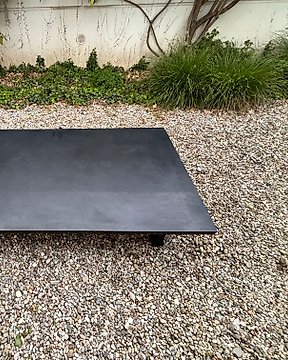
Mesa - Madera - Japón - Periodo Meiji (1868 -1912) (Sin Precio de Reserva)
N.º 86345825

N.º 86345825

Antique Kyousoku脇息(elbow rest stand) designed with maki-e bamboo leaves patterns.
Kyousoku脇息 is a comfort device placed at the side to lean against. In the Kiki, it was called Oshimazuki, and in the Nara period it was called Kyoshoku. The old form was passed down to Shoso-in as the ``rose sandal wood painting pins'', and the usage was to place it in front of the body and lean it against it, but from the Heian period onwards, it was placed on the side. A Kozuki-shaped top plate, on which you could place your table and rest on one elbow, was also created, with a cotton spread over the top. In addition to wood, the materials used were rosewood and bamboo. In addition to rectangular plates, there were also curved plates. For women, there was also a box-shaped ``Yorikake'' with drawers.
The typical shape is a flat plate with four legs, and some are made of a flat plate stuffed with cotton and covered with velvet. It was mainly used in Japanese-style rooms until the Meiji period. In period dramas, it is often seen used by noblemen (shoguns, feudal lords, aristocrats, etc.) in the upper seats, but in reality they were used in private rooms and were never used in official settings. In modern times, traces of it can be seen in restaurants and high-end inns where it is kept for guests' use, and in Go and Shogi games held in Japanese-style rooms.
Dimensions: 49 x 18 x 27 cm
Good condition, there are some stains, scratches, chips and wear off due to aging and using, please also take a look at the listed photos.
Will be well packaged and shipping by Japan Post in fast delivery.
Cómo comprar en Catawiki
1. Descubre algo especial
2. Haz la puja más alta
3. Paga de manera segura